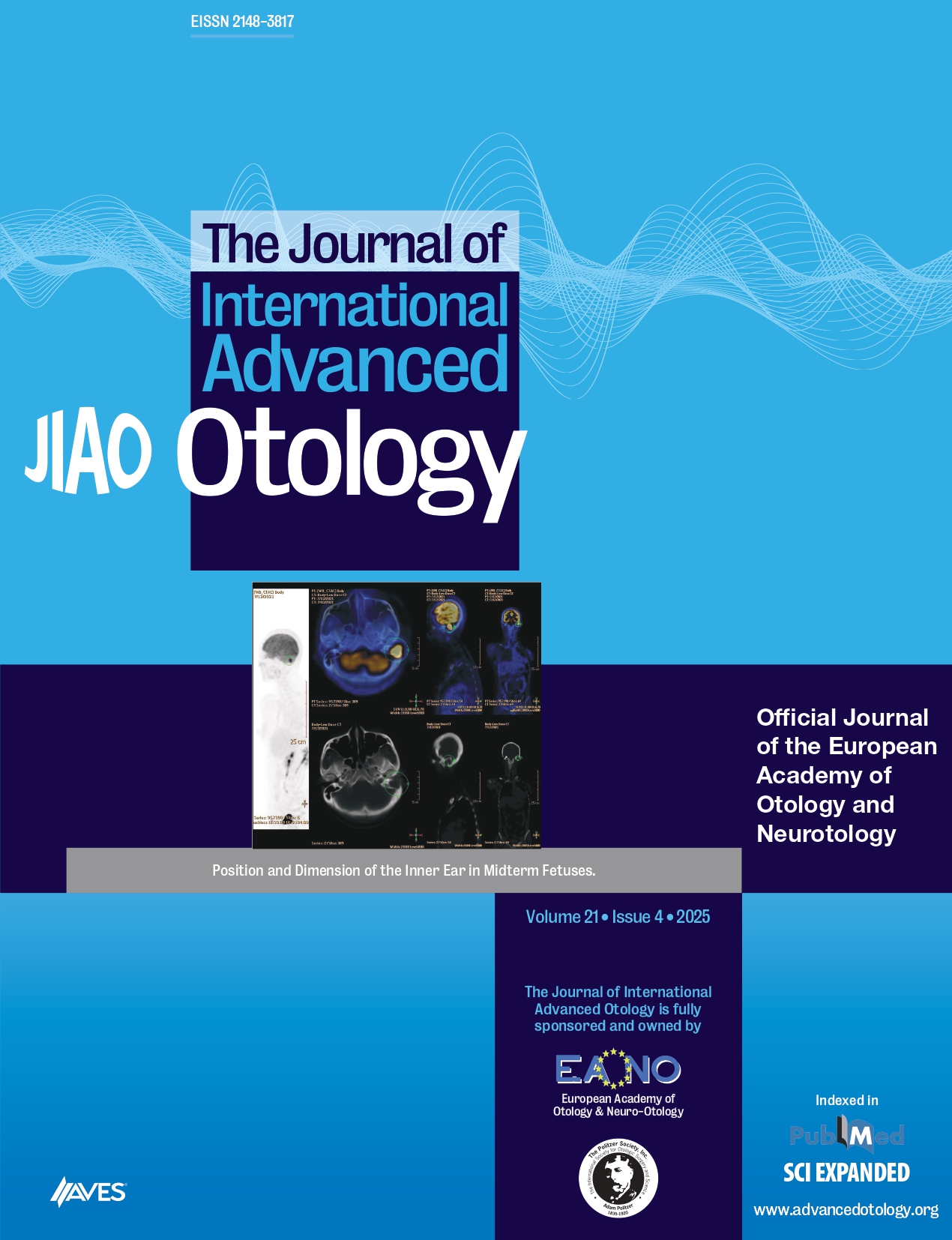Abstract
OBJECTIVES: To evaluate medial olivocochlear efferent system of babies with hyperbilirubinemia with normal auditory brain stem responses.
MATERIALS AND METHODS: This was a prospective study in a tertiary referral hospital. The study involved 40 hyperbilirubinemic and 44 healthy newborns. Cochlear and auditory activity of participants was evaluated by transient otoacoustic emissions (TOAEs) and brainstem auditory evoked response components (BAER). Medial olivocochlear (MOC) reflex was evoked with contralateral acoustic stimulation and recorded with TOAEs.
RESULTS: A comparison of the MOC reflex activity between two groups with Mann Whitney U test revealed that MOC reflex activity were significantly decreased in the hyberbilirubinemic group for both ears (p<.05). This difference was significant for all frequencies in both ears. There was no significant relation between total serum bilirubin level and MOC reflex activity.
CONCLUSION: Hyperbilirubinemic newborns had decreased MOC reflex activity. This may be indicative of future problems in speech discrimination and effective hearing in noisy background. Additional long cohort studies are needed to evaluate the clinical importance of MOC reflex measurements in this group. MOC reflex measurement has the potential to form part of the audiologic evaluation of newborns with hyperbilirubinemia in the future.
Cite this article as: Karabulut B, Sürmeli M, Bozdağ Ş, Deveci İ, Doğan R, Oysu Ç. Effect of Hyperbilirubinemia on Medial Olivocochlear System in Newborns. J Int Adv Otol 2019; 15(2): 272-6.



.png)
.png)